Canine Soldiers (K9 Squad), the Silent Warriors of Indian Army Dogs-Role in National Security and Warfare:
Canine Soldiers (K9 Squad), the Silent Warriors of Indian Army Dogs-Role in National Security and Warfare:
Army Dogs have been an integral part of the Armed Forces since time immemorial but their silent service to the nation always go unnoticed. There is more to a military dog than to just detect explosives and alert about enemy insurgency.
The relation between a soldier and the dog is as old as the battlefield itself. Romans were the first to use trained dogs in close combats and the inherent desire of the dog to please its master makes the task of training the animal easier.
Dogs of war are a special breed of warriors and soldiers who are fearless and ferocious in their attack and are renowned for their courage, loyalty, and devotion throughout the world. These are four-legged warriors who have been going into battlefields since the ancient times and are rightly referred to as the man's best friend.
The use of dogs in war is not new. Since the earliest days of recorded warfare, man has employed dogs as combatants or in direct support of combat operations.
'War dogs' were utilized by Greeks, Persians, Egyptians, British and Romans in ancient times. They were deployed mostly in a sentry role but sometimes they were taken into battle. Dogs were first used in war by Alyattes of Lydia against the Cimmerians in 600 BC when the dogs killed some invaders.
In mid 7th century BC Magnesian horsemen, in a war against the Ephesians, were each accompanied by a war dog and a spear-wielding attendant. The dogs were released to breach the enemy ranks, followed by a spear assault and then a cavalry charge. War dogs were often sent into battle with spiked collars and coats of mail armour. Dogs were used by the Romans during invasions to hunt out local guerrillas who resisted the Roman invaders.
Caesar's invasion of Britain was opposed by Celtic warriors and their dogs in 55 BC, the English Mastiff is one of the oldest recorded breeds. Attila the Hun used giant Molosser dogs in his military ventures. Armoured dogs were also utilized by ancient armies to defend their position or for attack purposes. Their key role was to distract soldiers and unseat horsemen. Mastiffs and other large breeds were used by the Spanish conquistadors against native Americans in the 1500s. Elizabeth I used dogs against the Irish in 1580 while Frederick the Great and Napoleon both used dogs as messengers and as guard dogs during their campaigns.
During World War I, the American Sanitary Corps used dogs to locate wounded soldiers. The two world wars saw the use of dogs to detect mines, explosives, booby traps, and also locate camouflaged enemy snipers, in addition to using them as messengers. But it was the Soviets who in World War used dogs effectively as anti-tank weapons, with explosives strapped to their backs. Anti-tank dogs were used extensively by the Soviets during 1941-1942 against the German tanks on the eastern front in World War II. According to reports, some 40,000 dogs were deployed by the Soviet Army, mostly for anti-tank operations.
Dogs also jumped into combat alongside British Paratroopers on D-Day in World War-2 where they together fought the German Armies. In Modern, Warfare Dogs have served primarily in explosive detection roles in Iraq, Afghanistan, and Kashmir. Dogs are also trained to engage directly with the enemy as part of special forces assault teams.
U.S. Navy's SEAL Team Six during Operation Neptune Spear in Abbottabad, Pakistan on the night of May 02, 2011, had Cairo in their team which was a Belgian Malinois dog. Cairo was entrusted with detecting bombs, concealed enemies and even detect secret doors or passageways. Cairo was held-dropped into the compound with the other DEVGRU Operators and played a key role along with his teammates secure the perimeter around the dwelling.
In the art of modern warfare, the role of dogs has changed from attack to other roles like
1. Sentry and Guard duties
2. Logistics and Communications including Rescue and Casualty
3. Warning dogs including detection and tracking,
4. Medical Research
5. Scouting
6. Drugs and Explosive detection
7. Companions and Mascots.
Indian Army association with dogs is old. Army dogs were pressed into service for the first time in the middle of 1959. With the encouraging performance shown by the first batch, they were deployed on a large scale. A war dog training school was raised on March 1, 1960, at Meerut. Remount and Veterinary Corps (RVC) Center and College imparts Basic and advance training to dogs and their trainers on specialized jobs like explosive detection, mine detection, tracking, guarding and assaulting. The Remount and Veterinary Corps (RVC) is one of the oldest services of the Indian Army, carrying the motto 'Pashu Seva Asmakam Dharm'. The Remount Veterinary Corps (RVC) has been entrusted with the responsibility to procure, enroll, train and deploy Army dogs, which are imparted rigorous training, depending on their breed and aptitude. After that, they are placed in one of the numerous categories such as tracker dogs, guard dogs, infantry patrol dogs, mine detective dogs, explosive detective dogs, avalanche rescue dogs and so on.
These trained dogs are deployed in various operational roles in J&K, Northeast as well as LOC. They are also entrusted with the task of providing security to VIPs and guarding vital defence installations. Many of the elite Army dog units have excelled in a large number of operational missions, numerous dogs along with their handlers have even received awards like Shaurya Chakras, Sena Medals and Chief of the Army Staff's commendation cards in recognition of their exceptional performance.
There are around 1200 trained dogs in Indian army at present. These are mainly foreign breeds like German Shepherds, Labradors, Belgian Shepherds and Great Swiss Mountain dogs which are trained by Remount and Veterinary Corps (RVC), but now the army is inducting indigenous dog breed known as the Mudhol Hound. A Lean dog with long legs, the Mudhol Hound belongs to the family of sighthounds, meaning that it depends on its keen sense of sight to hunt and chase prey. This hound has the ability to run swiftly and sniff suspected items, with its speed and swiftness as well as size it can be a good guard dog.
Besides these known breeds with strong lineage, local and stray dogs also play a crucial role in the Indian army. These are local dogs which are adopted by the army unit based there, they feed and look after these dogs. Such dogs have proved their mettle in detecting the movements of infiltrators and providing early warnings. Their presence also neutralized and dulls the effect of isolation on the soldiers deployed at forwarding posts.
Indian Army also earlier euthanasizes (Mercy Kill) Military Dogs after their retirement from active military service. There was a huge outcry over this when it was revealed through the RTI Act. After a public outcry, this move was taken back except for those cases where the canine is suffering from an incurable disease. Now the retired Army Dogs can be adopted after their retirement where they are kept at Meerut Cantonment for rehabilitation. At Rehabilitation Centres, these Dogs had little to no scope for physical activities and hence many people especially dog-lovers are carrying the message to adopt a military Dog and take home a national hero.
Countries like USA, England, Belgium, Netherlands all have dedicated monuments and memorials for those war dogs who were martyred on the line of duty acting with utmost devotion and loyalty. I sincerely hope that India should also duly honour these War Dogs who have proved their mettle on the Battlefield not only as Partners or Mascots but also as a brother in Arm who equally serve their nation as any other warrior under the flag.
The Indian Army Dogs (K9 Squad)---
If we are leading a safe, secured, and peaceful life within the country, it’s because of the chivalrous soldiers guarding us relentlessly at the borders. Irrespective of what we say or how much thanksgiving we can offer, their gallantry and bravery remains unmatched. The brave soldiers stand tall at the borders just to safeguard the nation and its dwellers. That’s not all; they are the ones to come forward and secure the nation’s integrity during wars and other emergencies.
These soldiers find the best support in the K9 Army, where the canine partners emerge as a great support-system for these courageous men and women.
Assessing the present scenario--------------
The military dogs continue serving the nation till they are 8-9 years old. However, it’s after their service years that their future seems to be a bit uncertain. The process of mercy-killing or euthanasia was quite prevalent before. But, the intervention of Maneka Gandhi in 2016 stopped this trend and it was then that the Indian Army felt the need to arrange for a rehabilitation for their four-legged friends.
Today, we have two rehabilitation centers for these retired canine soldiers. While the first one is in Meerut, the other one is situated in Hempur, a small town in Uttarakhand. After intensive years of service, these dogs are shifted to old-age homes for care and attention.
Tracking the service years---------------
When it comes to understanding the role played by Indian Army dogs, it becomes imperative to delve deep into nuances. While recruiting canine partners in their team, the Indian Army officials take quite a few factors into consideration. Here’s a crisp and brief list:
1) The breed:
Recruitment in the Indian K9 Army is quite rigorous. You will find dogs belonging to specific breeds here. Most of the dogs belong to the ‘Great Swiss Mountain’, ‘German Shepherd’, ‘Belgin Malinois’ and ‘Labrador’ family. However, the latest inclusion of the local Indian breed has made quite some buzz. RVC or the ‘Remount and Veterinary Corps’ center located in Meerut has taken up the responsibility of training Mudhol Hounds, which happens to be an indigenous variety. Mudhol hounds are the product of three distinct breeds: the Sloughi, the Saluki and the Greyhound. All of which are sight hounds.
2) Hiring eligibility-------------------
Intensive dog training is an integral part of grooming these canine friends. However, private organizations don’t have the desired control over this particular process. Dogs trained and groomed by them can’t get included in the K9 Army and it has to be a government organization doing the needful.
RVC and NTDC (National Training Center for Dogs) are the premier organizations famous for imparting targeted training to these dogs. Right from breeding and training to rearing and rehabilitation, these institutes extend comprehensive support to the four-legged friends.
The dogs trained at these institutes have delivered outstanding performances at workplace. Some of the credentials are as follows:
• Participated and performed excellently in almost 300 anti-militancy events.
• Sniffed out mines as well as explosives in close to 100 instances.
With NTDC having the ISO 9001-2000 certification in dog training, the organization has also received acknowledgement and the title of ‘Center of Excellence’ in 2001.
3) The training objectives-------------------
Every registered organization follows a specific module while imparting targeted training to the Army dogs. The prime objective is to groom the canine friends in such a way that they emerge as greatest aids for the army-men. Here are some of the aims and goals set by organizations like NTDC:
• Training the four-legged friends as well as their handlers
• Imparting training for dog care and kennel management
• Train officers of CPO and BSF in dog handling
• Rear and breed pedigreed pumps
• Formulate and devise latest techniques for intensive dog training
4) Getting introduced to the job role------------------
The role played by these brave and courageous canine partners is more than just indicating about enemy insurgencies or sniffing explosives. There’s a lot more to their job roles and here are a myriad of ways they help the Indian Army:
a) Search-and-rescue operations: These gallant partners play a pivotal part in the search-and-rescue operations. It’s their sniffing capabilities that helps in the identification of explosives, mines, or a danger lurking around the corner.
b) Quick and targeted responses: The military dogs have extraordinary capabilities to understand their handlers’ instructions. They can even respond to hand gestures.
c) Control over actions: Indian military dogs are trained to master various arts and actions. They can even gain control over their barks in occasions of extreme emergency.
d) Natural adaptability: One of the major qualities of these canine partners is their efficiency in diverse situations as well as natural adaptability to various occasions. No matter what the training schedule, these partners will surely adapt to it.
Retirement woes-----------------
The average service lifecycle of a military dog is 8-10 years. However, this happens to be an approximate figure and the period can vary in some cases. Before 2016, the Indian Army used to euthanize and mercy-kill these canine friends. The cost of rehabilitation, after-care, and post-military life support is quite expensive. That’s not all; there’s always a possibility of crucial information getting leaked from them. The situation is no longer the same as sincere efforts by Maneka Gandhi has stopped the process of euthanasia. These lionhearted performers and brave canine soldiers get rehabilitated in registered centers and are also available for adoption.
Food services for K9 army---------------
There’s a difference in the food habits of these dogs. While in service, members of the K9 Army can have cooked food. Their performance will depend on their health and nutrition which makes it imperative to provide them a healthy diet. Food habits change a lot after retirement. Retired canine partners can eat pedigree or royal canine food.
Things You May Not Know About Indian Army Dogs----
Here are some lesser known facts about military dogs in India:-------
1. Like the soldiers, they too undergo rigorous training of their level and only some of them make it through while others are rejected.
2. The army dogs are no ordinary pets as their history is full of valiant tales. The fact that Remount Veterinary Corps (RVC) is decorated with a Shaurya Chakra and close to 150 commendation cards is reason enough to prove their worth.
3. Army has around 1,000 trained dogs in its ranks. The task to maintain the strength is assigned to RVC.
4. The army dogs are integral part of search and rescue operations where they have to assist in recovering explosives. Without them, the search operations would be at a stand-still.
5. They are taught to respond to military-specific hand gestures and even verbal orders by their handlers.
6. While undergoing extensive military training, the dogs are coached in commands that require them to hold their barks in situations of combat, in order not to reveal their position to the enemy.
7. An army dog squad had participated in Republic Day parade after 26 years in 2016. The RVC Centre and College in Meerut Cantt had put in great effort to prepare the squad for the march past.
8. The most preferred army dogs are the German Shepherd and Labradors because of their natural ability to adapt to any training schedule. They are easy to train and have the special ability to perform the tasks required by the army.
9. Their service lasts anywhere from 8-10 years (ambiguous).
10. As soon as they retire from service, they are euthanized. The army finds it expensive to maintain their post military care. Risk is also of their knowledge on sensitive locations being revealed to enemies.
Salute to the uncelebrated heroes----------
There’s no denying the role played by these unsung heroes of the Indian Army. Their efforts in safeguarding the country and its citizens is worth applauding, and it’s here that we have something to do to make their lives better. Since these canine friends are available for adoption, We as vets takes the proud opportunity to address all Indian citizens to come forward and take them home as lovely companions. That’s perhaps the best tribute we can pay to them.












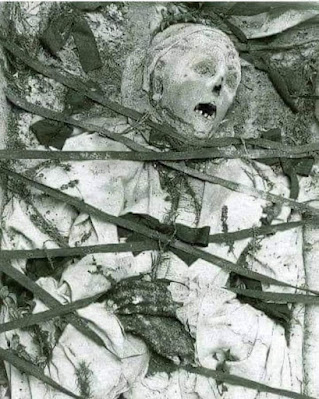
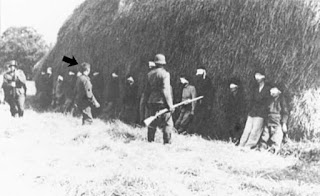

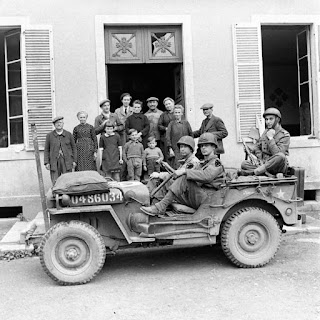




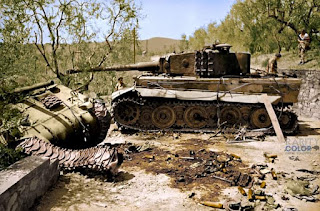
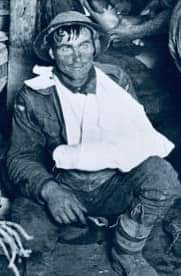
Comments
Post a Comment